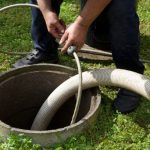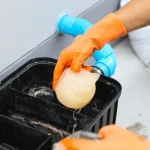Things You Need to Know about Septic Systems
For many Australians, particularly those living outside city centres, septic systems are more than just plumbing infrastructure; they are an integral part of their home and environment. However, the intricate workings of these miniature wastewater treatment plants are often a mystery. This guide delves deeper into the world of septic systems, helping you to be informed and to understand their operation.
Beyond the Tank: Examining the Septic System Ecosystem
While the septic tank steals the spotlight, it’s important to remember that it operates within a larger ecosystem. Here’s a closer look at the supporting elements:
The Inlet Pipe: This delivers wastewater from your home to the tank, ensuring proper flow and preventing backups.
The Distribution Box: This acts as a traffic controller, directing the partially treated effluent from the tank to the absorption field.
The Absorption Field (Drainfield): This hidden network of perforated pipes is the workhorse of the system. It distributes the effluent into the surrounding soil, where it undergoes natural purification through filtration and microbial activity.
The Soil: This natural filter plays a critical role in breaking down pollutants and ensuring the treated water safely returns to the groundwater.
Bacteria: The Heart of the System
Microscopic but mighty, bacteria residing within the septic tank are the unsung heroes responsible for breaking down organic matter. Maintaining their delicate balance is crucial for optimal system performance, as harsh chemicals, antibiotics, and excessive grease can disrupt their harmony, leading to clogs and malfunctions.
Maintenance Matters: Investing in the Long-Term Health of Your System
Just like your car, your septic system needs regular attention to keep it running smoothly. Here’s a deeper dive into maintenance best practices:
Frequency of Cleaning: While every system is unique, a typical 3-bedroom household might require cleaning and a pump-out every 2-4 years. However, consult a local qualified professional such as Clarence Valley Septics for specific recommendations based on your system’s size, usage, and soil type.
The Cleaning Process: A certified septic professional will use a vacuum truck to remove accumulated sludge and scum from the tank, preventing them from clogging the absorption field. Please remember, we are the experts, so leave the cleaning to us.
Protecting Your Investment: Beyond regular cleaning, septic system owners can consider these proactive measures:
- Install a septic system alarm: This device alerts you to potential problems like high water levels or pump failures, allowing for early intervention and preventing costly repairs.
- Divert rainwater: Ensure gutters and downspouts direct rainwater away from the absorption field, preventing overloading and potential system failure.
- Plant smart: Choose native plants with low water requirements and avoid planting large trees near the drainfield, as their roots can damage the pipes.
Troubleshooting Tips: Identifying and Addressing Septic System Woes
Even with the best care, problems can arise with septic systems. Here are some common issues and how to address them:
- Slow drains: This could indicate a clogged system due to excessive solids or improper disposal practices. Contact a qualified professional such as Clarence Valley Septics for prompt diagnosis and rectification.
- Sewage odours: Foul odours around your drainfield signal a potential leak or malfunction. Do not ignore this warning sign – seek immediate professional assistance to prevent environmental damage and health risks.
- Visible sewage: This is a serious issue requiring urgent attention. It indicates a significant system failure that could pose health and environmental hazards. Contact a qualified professional like us immediately to assess the situation and initiate repairs.
Beyond the Basics: Environmentally Conscious Septic System Management
As responsible homeowners, we share a responsibility to protect our environment. Here are some eco-friendly practices you can integrate into your septic system routine:
- Water conservation: Implement water-saving measures like fixing leaky faucets, opting for water-efficient appliances, and taking shorter showers. Reducing water usage minimises the load on your system and protects valuable water resources.
- Composting: Divert food scraps and yard waste away from your septic system by composting them. This not only reduces the organic load on the system but also creates nutrient-rich compost for your garden.
- Choose eco-friendly cleaning products: Opt for biodegradable and phosphate-free cleaning products to minimise harm to the delicate bacterial balance in your tank and the surrounding environment.
Empowered Homeownership: Partnering with Professionals
Maintaining a healthy septic system isn’t a one-person job, and partnering with a qualified professional like Clarence Valley Septics is essential for ensuring optimal performance and preventing costly problems down the line. Here are some key players you can rely on:
- Septic system professionals: These licensed experts can conduct inspections, cleaning, and pump-out services, and provide valuable advice on maintaining your system.
- Local council: Your council can provide information on local regulations, permits, and approved methods for septic system maintenance.
- Water Services Association of Australia (WSAA): This organisation offers comprehensive resources and information on septic systems and sustainable wastewater management practices.
In Conclusion
A well-maintained septic system is an investment in your home, your health, and the environment.
By taking proactive steps and partnering with industry professionals, you can ensure that your septic system serves you and your family reliably for years to come.
Don’t hesitate to reach out to us for advice or assistance if you have any concerns about your septic system.


